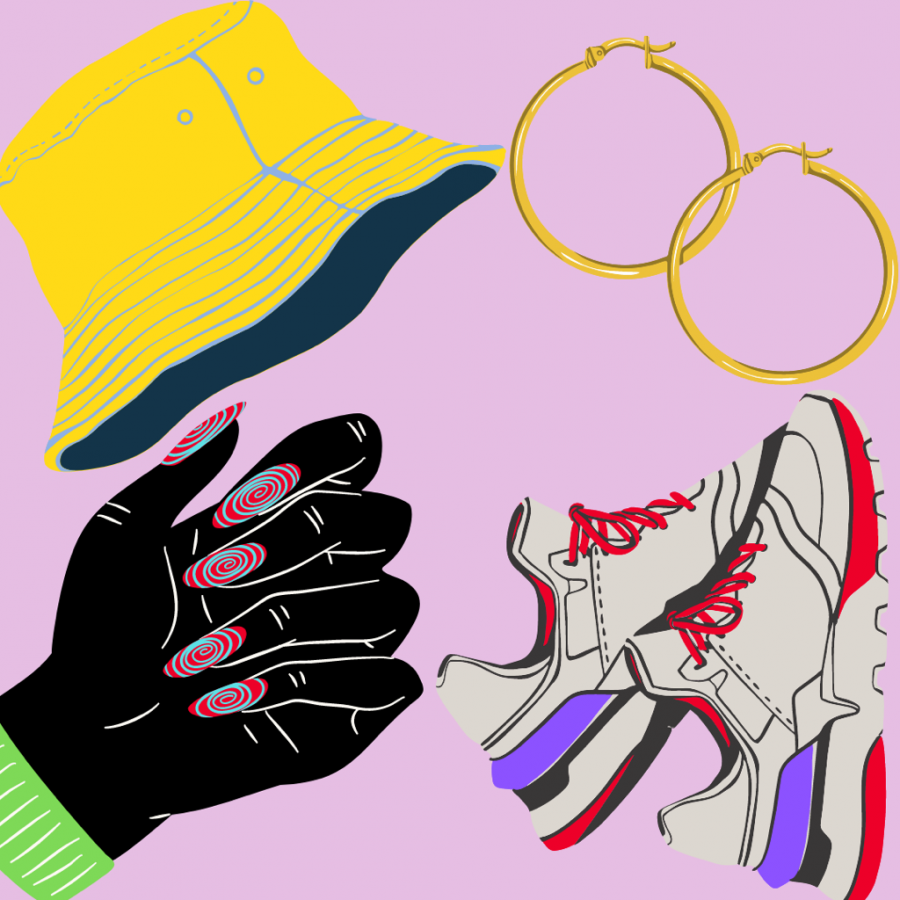Where your favorite trends started: a tribute to black culture
February 28, 2021
As personal and objective as fashion can be, it’s also cyclical and recycles the same trends every couple of decades. Fashion often stems from ideals rooted in a particular culture. In honor of Black History Month, it’s time to identify and pay homage to beloved trends that were first coined in black culture.
High end streetwear:
The popularization of wearing oversized sweats and sneakers as trendy everyday clothing originated in black communities. The trend first caught attention during the 70s and 80s hip-hop movement by predominantly black artists such as Tupac and rap group N.W.A. At the time an aspiring designer known as Dapper Dan also dove into the trend by illegally printing high-end brand logos onto t-shirts. While streetwear was first snubbed by designers who acknowledged the style as nothing more than generic sportswear, the style grew in popularity under the radar. Soon enough well-known white owned brands recognized this and designer streetwear was born. The streetwear trend has since expanded and is no longer exclusive to black hip-hop artists.
Sneaker culture:
Sneaker culture also gained traction in the early hip-hop scene to help, as fashion does best, express one’s self and sense of identity. The trend was elevated with the help of basketball stars, specifically Michael Jordan. The trend revolves around collecting sneakers, sometimes only to adorn shelving and never actually be worn. Individuals who find themselves enamored with having the next hottest sneaker can define themselves under the label “sneakerhead.” This trend speaks to any and all fashion forward individuals; the crazier the colorway, the better.
Bucket hats:
The rise of the bucket hat, also known as the fisherman hat, dates all the way back to the 1900s. The hat resurfaced in the 60s and made a full comeback as a fashionable, sought-after accessory in the 90s and early 2000s. Even today it seems bucket hats have become a true staple, adding flare to any outfit. The bucket hat revival in the 2000s was definitely dominated by women and seen as a feminine accessory. However, it’s understood that hip-hop rappers ultimately popularized the trend by wearing the hats on album covers and TV debuts. It’s safe to say the trend has become favored above and beyond its original patrons of musical artists and fishermen.
Hoop earrings:
Hoop earrings originated centuries ago in Africa. Identifying hoop earrings as a trend can be controversial as it was born into a culture’s traditional fashion. However, if worn with respect and proper attribution, it seems more widely accepted for hoops to be rocked on any individual. Hoops became popular amongst African American and Latino women around the 1960s, acting as a symbol for female empowerment. The famous hip-hop group Salt-N-Pepa was especially known for their style that often included a pair of statement hoop earrings. Since the earrings first caught fashion traction, they have continuously been a wildly popular and appreciated piece of jewelry.
Acrylic nails:
The color, length and compulsive finger tapping are all qualities that accompany the admired acrylic nails. The trend for acrylic nails seems to peak and sink, but never entirely fades out. Acrylic nails were rocked on the fingernails of women dating back to ancient Egypt, but they have become a more current trend mainly thanks to black women. Donyae Coles, an African-American model, first wore acrylics on the cover of Twen magazine in the 60s. From there, the trend was endorsed by notable singers such as Donna Summer and Diana Ross. These sought-after nail extensions appear to be a trend that’s here to stay whether they’re a one time eighth grade graduation gift or a nod to black cultural roots.
Fashion should be enjoyed by all individuals as a means of self expression. However, it’s important to recognize where trends originated and give credit when and where it’s deserved. It’s also crucial to differentiate appreciation and appropriation before following a trend that’s seemingly mainstream. Overall, I think serious praise should be given to the numerous black designers and icons that work hard to take fashion to the next level.

